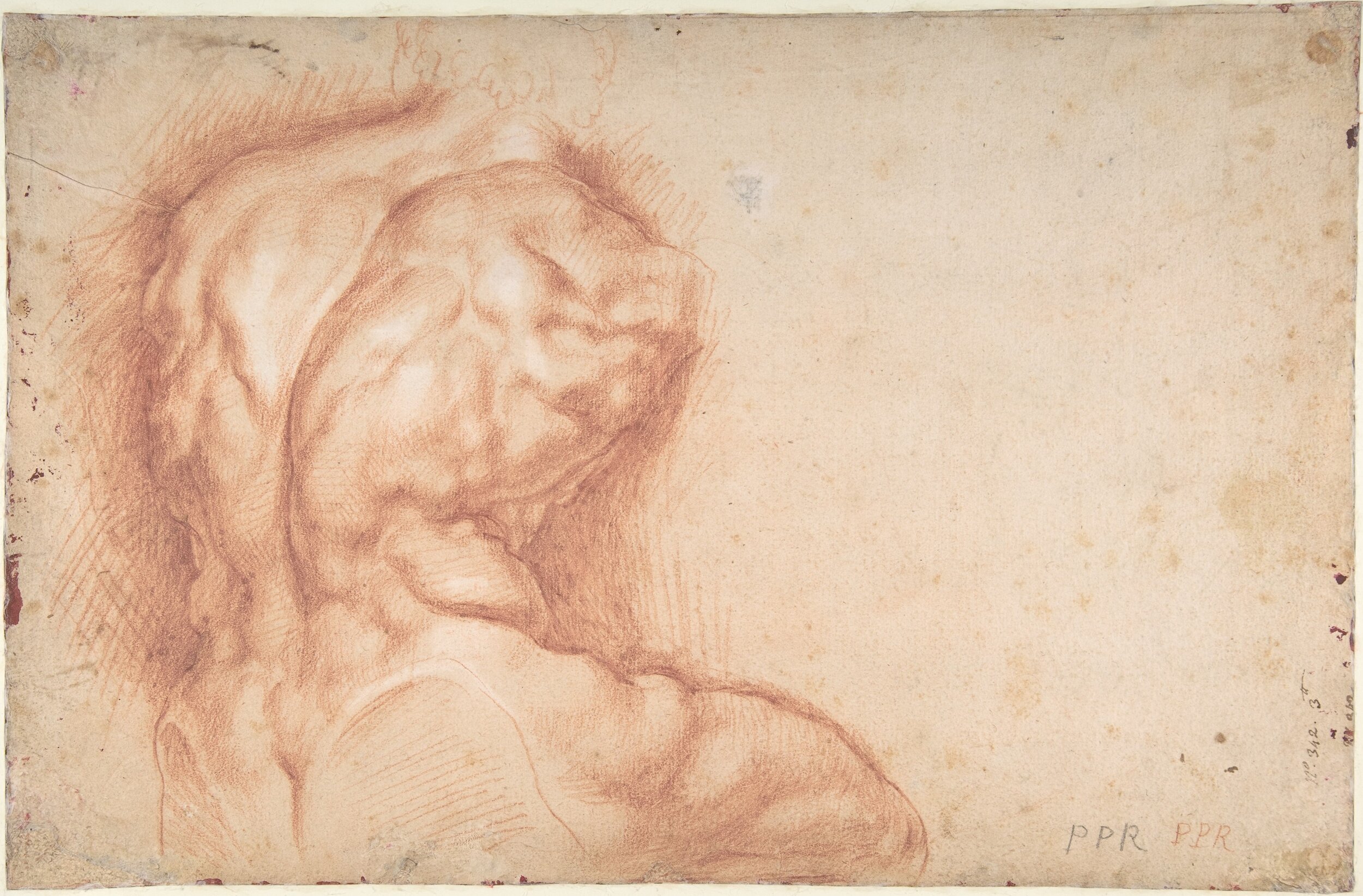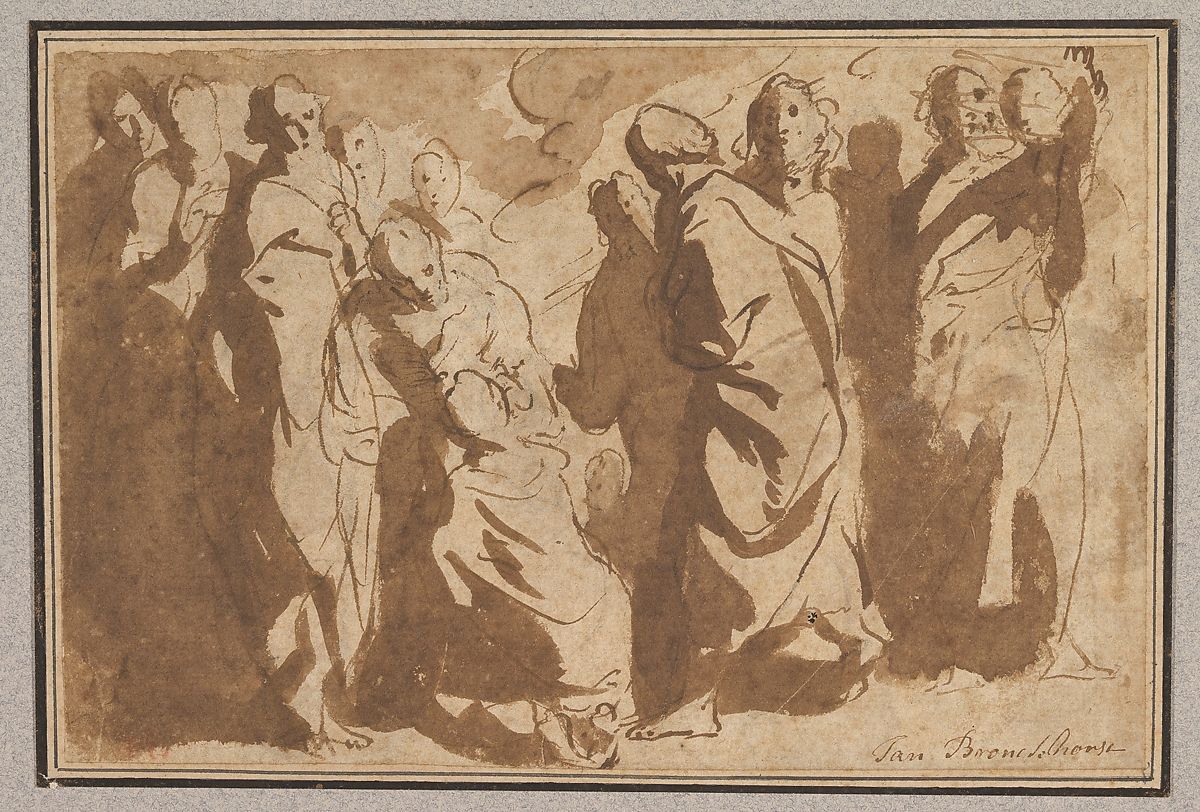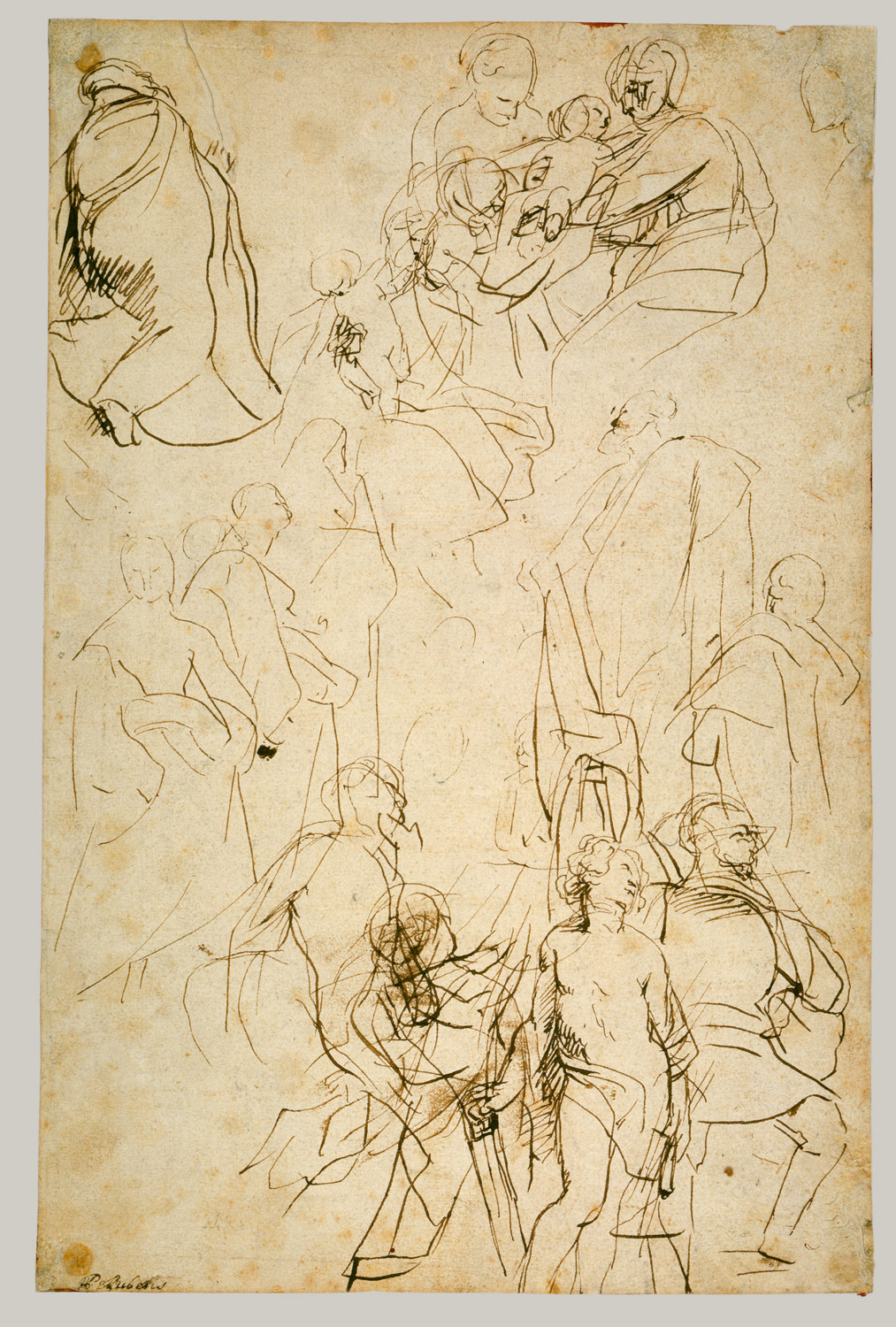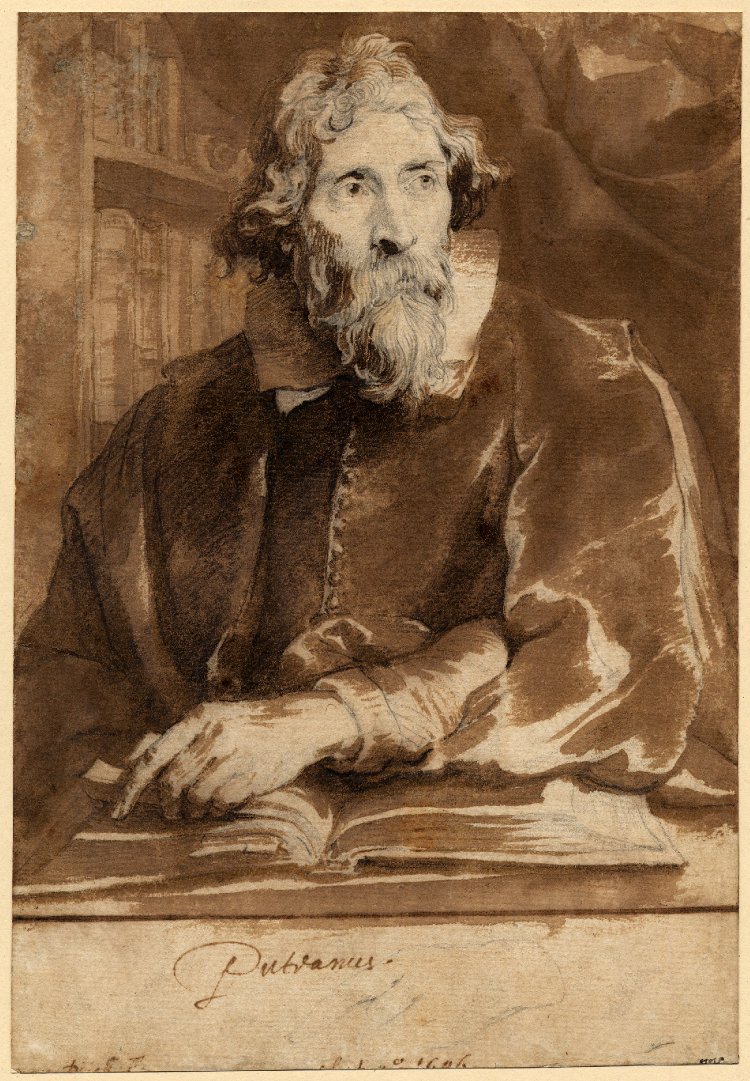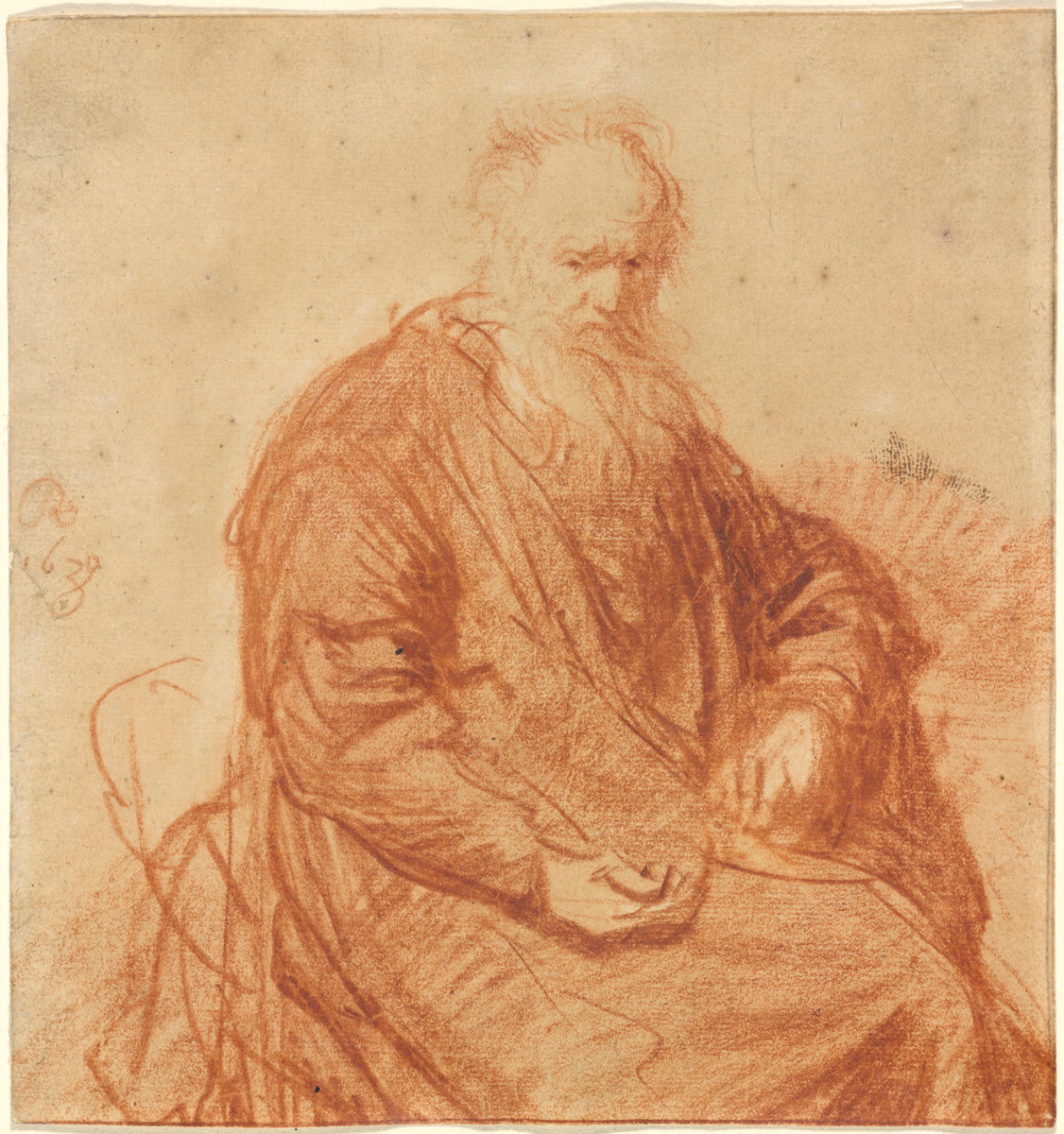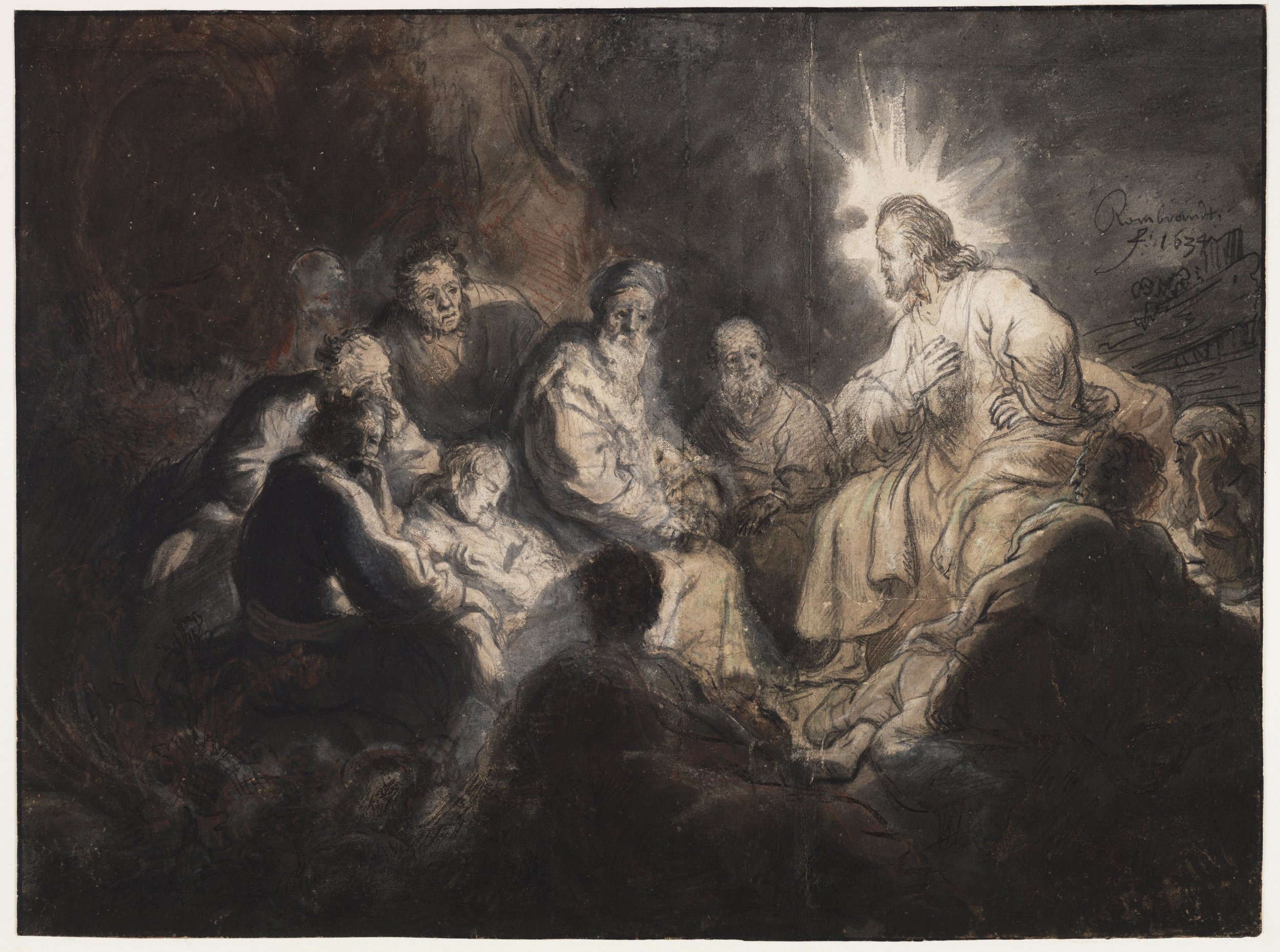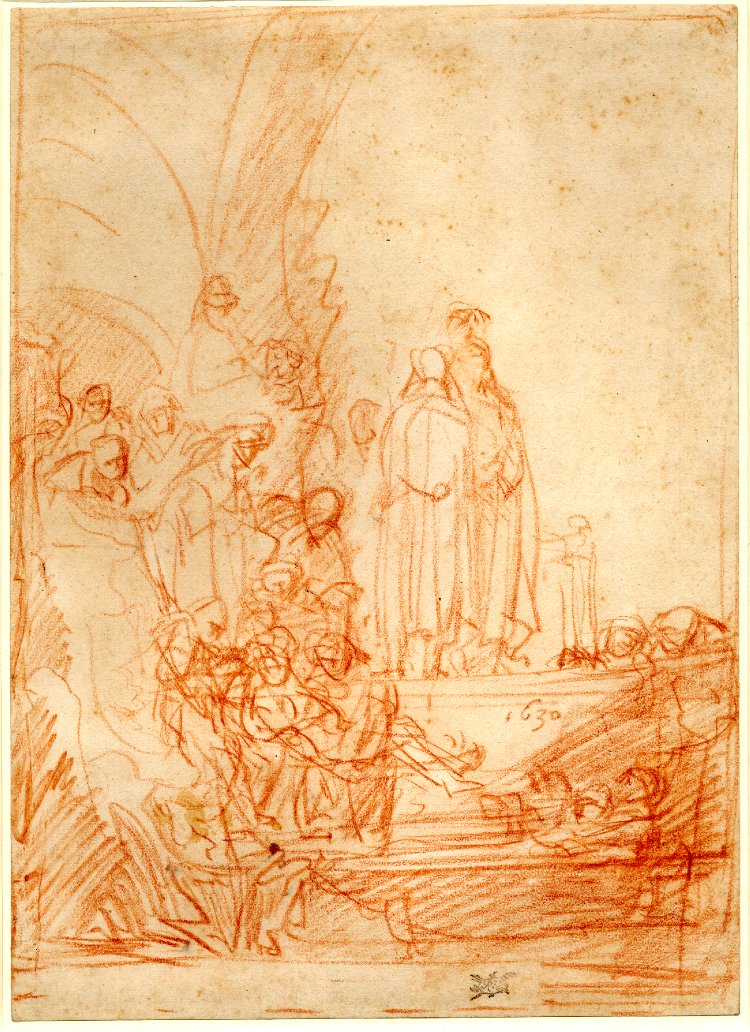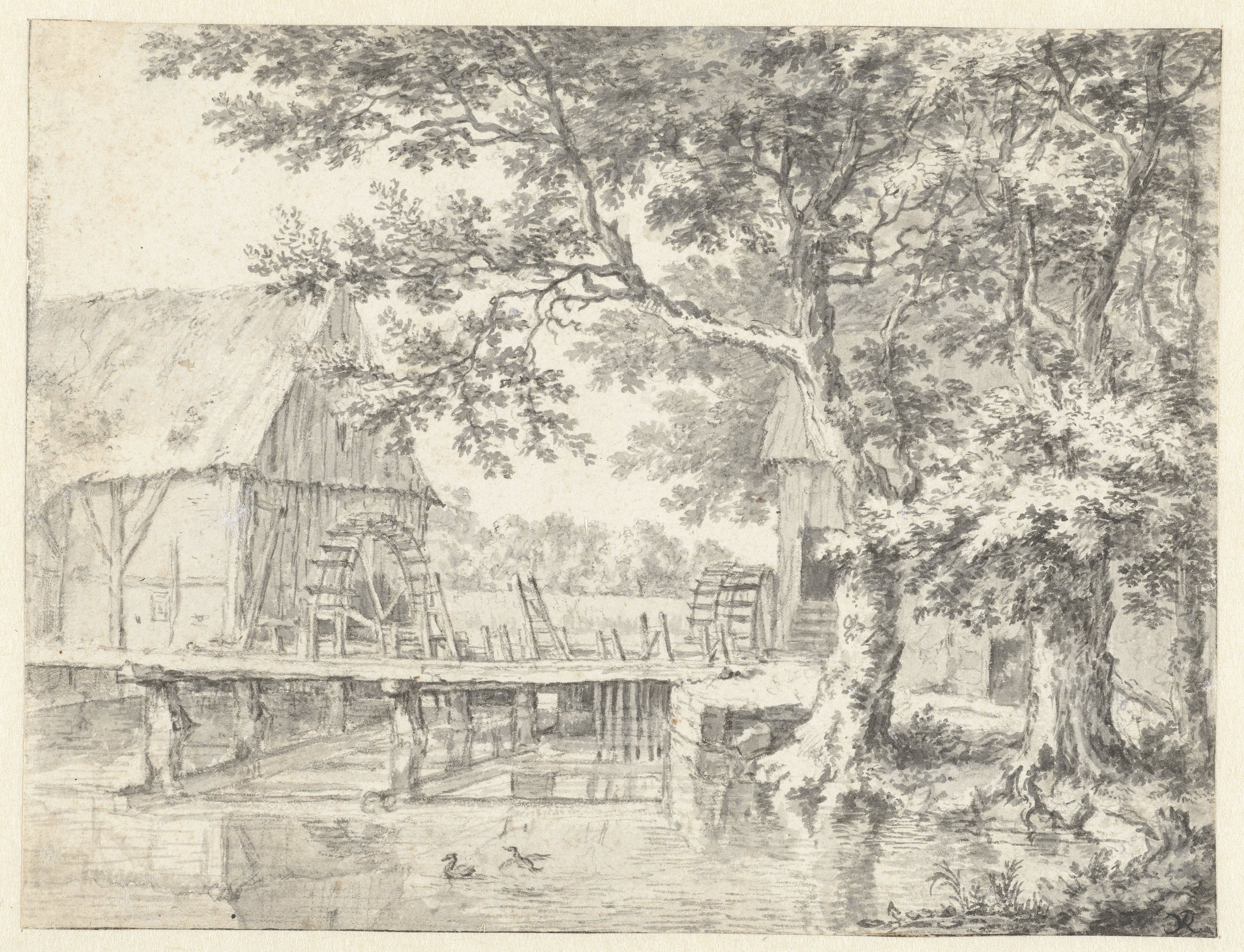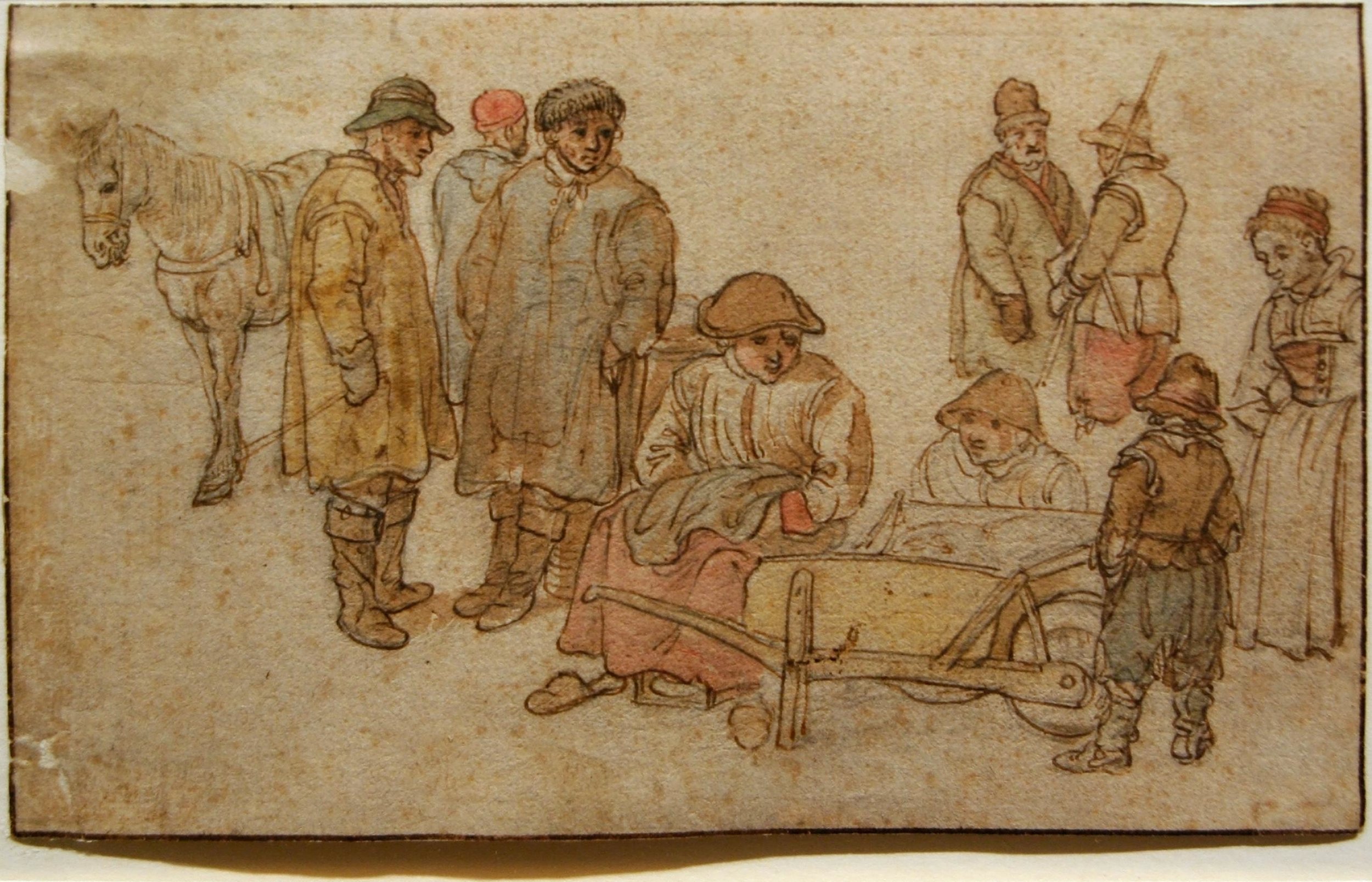LOW COUNTRIES
Artists from Antwerp had started visiting Italy in the 16th century, Hendrick Goltzius (1558-1617) being one of the last to arrive. In 1600, he was followed by the young Pieter Paul Rubens (1577-1650) who produced a series of magnificent altarpieces in the new Baroque style upon his return to northern Europe in 1608. Several of their contemporaries were drawn to the art of Caravaggio, exemplified by the strongly-contrasted areas of light and dark in the drawing here by Jacob Jordaens (1593-1678). Rubens’s assistant, Anthony van Dyck (1599-1641), was also influenced by Caravaggio, particularly in some of his portrait drawings. Rembrandt van Rijn (1606-1669) was clearly interested too, although he never left Holland. His drawings are loved for perfectly encapsulating a range of human emotion, with intelligent compositions, lively pen- and brush-work, and atmospheric rendering of light and colour. Some artists, such as Jacob van Ruisdael (1599-1664) and Hendrick Avercamp (1585-1634), specialised in secular subjects in response to the Protestant distaste for religious iconography and emergence of an open market for drawings and paintings.
Goltzius, who founded an academy in Haarlem like those in Italy and France, visited Rome in 1590. In addition to many fine drawings of classical sculptures, he took back to the Netherlands this portrait of the Flemish sculptor Jean de Boulogne or Giambologna who had settled in Rome in 1550.
This sketch is a copy of Raphael's painting in oil on panel of the same name in the Palazzo Pitti in Florence. It represents God the Father surrounded by symbols of the four Evangelists.
Although this extraordinary drawing is undated, it is likely to have been produced in the Belvedere Courtyard during Rubens’ first visit to Rome, around 1601.
Throughout his successful career as an artist and diplomat, Rubens produced many graphic works including rapid pen and ink designs for compositions (known as primi pensieri or first thoughts), energetic oil sketches, and sensuous figures drawn from life such as this Psyche.
Here Rembrandt uses a complex technique starting with pen and black/brown ink, then adding grey and brown wash, black, red, and green chalk, and finally white gouache (an opaque watercolour consisting of natural pigment, water, and a binding agent).
Jonathan den Otter, Associate Specialist, Old Master Drawings Deparment, Christie’s.



